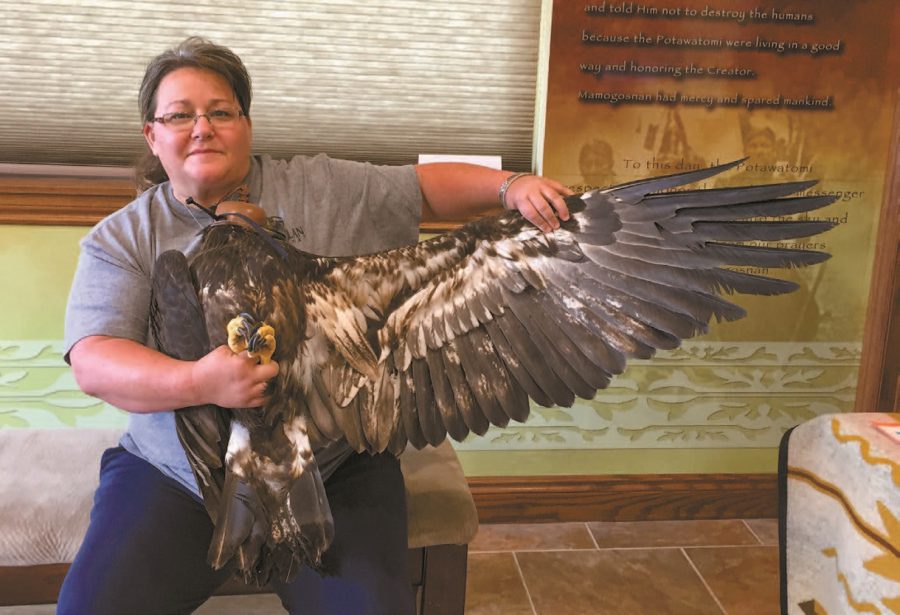
Aviary staff has been working to prepare an American bald eagle hatched at the facility in May for release. In addition to securing permission from the United States Fish and Wildlife Service to release the eagle, the staff prepared the aviary so that it can to come and go from the facility to ensure he’s healthy and that he has the hunting skills to sustain himself in the wild.
“We have spent the last month planning and completing the many things required by U.S. Fish and Wildlife Service to obtain the final go ahead to release the first eaglet hatched here,” said aviary managers Jennifer Randell and Bree Dunham. “One of those requirements was a veterinary checkup.”
At sunrise the morning of his examination, staff put on smoke, put down tobacco and prepared to catch the eaglet.
“We were excited, anxious and, quite honestly, a little nervous. Although we catch all of the eagles every year for their vet checkups and West Nile virus vaccinations, this would be the first time anyone had this eaglet in hand, not to mention he’s fully flighted,” Randell added. “We don’t want him to injure himself or damage his flight feathers in the process.”
Staff proceeded with the exam with the help of Dr. Staci Roberston from Nichols Hills Veterinary Clinic.
Within a minute of entering the enclosure, the staff had the eagle in hand and then proceeded with the exam. He received a clean bill of health.
“Kyla and Charlie did an excellent job of raising this eaglet. He is robust, healthy, strong and ready to go,” Dunham said. “Once we receive the final go-ahead from USFWS, we will have to catch him one last time to fit him with the same type of GPS backpack telemetry that Wadasé Zhabwé wears. But his release will be much different than what we did for Wadasé.”
The staff plan to “hack” the eaglet from the enclosure. The process is much more natural than releasing the eaglet from the platform. The staff will hold him in the enclosure where he hatched until he can fl y before opening a section of the enclosure so he can come and go while acclimating to his new environment.
“This type of release will be the closest experience to him being in a nest in the wild that we can provide while still offering food as he learns to hunt on his own,” Randell said. “Admittedly, that idea sounds a lot less exciting than the picture that comes to mind when talking about releasing an eagle, but it is what’s best for this eaglet.”
While fitting him with the telemetry backpack and banding him, another team will make two modifications to his enclosure. First, a section of the slats will be removed to allow the eaglet to come and go, and then new perching will be added on the inside and outside of the enclosure opening. Once completed, he will be returned to his enclosure.
“He could fly straight to the new perching or he could wait days or weeks before he chooses to leave the enclosure,” Dunham explained. “Once he does venture out, there are no guarantees that he will continue to come and go like Wadasé did, but we suspect he will.”
The aviary is temporarily closed to visitors to allow the eaglet to become comfortable in his new environment.
“The smallest egg has certainly come a very long way,” Randell said. “We will monitor him and provide updates on his progress just as we have for Wadasé. It is an incredible blessing to be able to return one of our prayer warriors to the sky and we are humbled to have the opportunity to share that with all of you.”
For more information about CPN eagle Aviary and updates, visit potawatomiheritage.org or facebook.com/CPNeagleaviary. Send your encounters with eagles in Oklahoma, or wherever you may be, to aviary@potawatomi.org.
